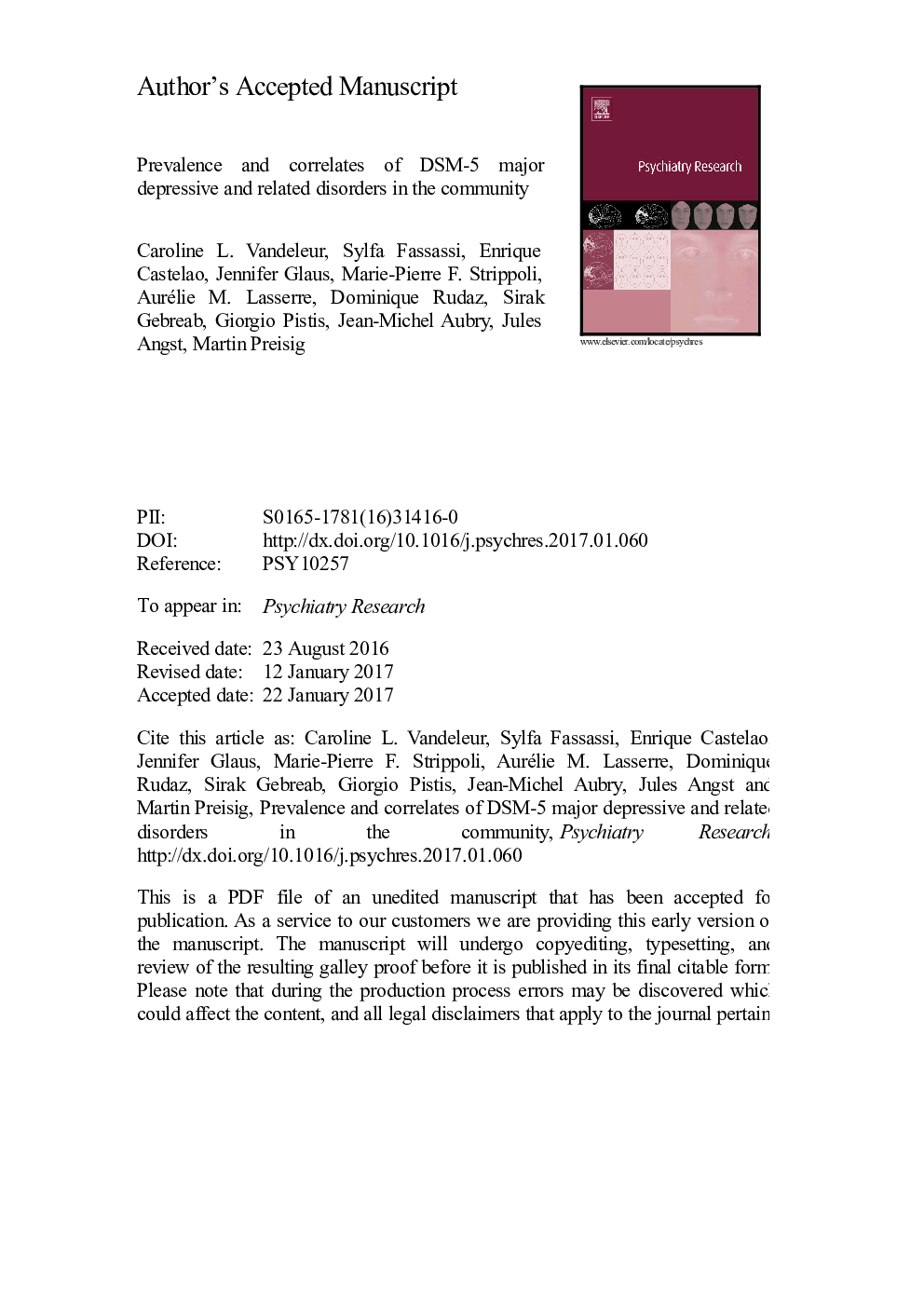| Article ID | Journal | Published Year | Pages | File Type |
|---|---|---|---|---|
| 4933335 | Psychiatry Research | 2017 | 25 Pages |
Abstract
Although the DSM-5 has suggested the two new categories of Persistent Depressive Disorders (PDD) and Other Specified Depressive Disorders (OSDD), no study so far has applied the DSM-5 criteria throughout the range of depressive disorders. The aims of the present study were to 1) establish the lifetime prevalence of specific depressive disorders according to the new DSM-5 definitions in a community sample, and 2) determine their clinical relevance in terms of socio-demographic characteristics, comorbidity, course and treatment patterns. The semi-structured Diagnostic Interview for Genetic Studies was administered by masters-level psychologists to a random sample of an urban area (n=3720). The lifetime prevalence was 15.2% for PDD with persistent major depressive episode (MDE), 3.3% for PDD with pure dysthymia, 28.2% for Major Depressive Disorder (MDD) and 9.1% for OSDD. Subjects with PDD with persistent MDE were the most severely affected, followed by those with recurrent MDD, single episode MDD, PDD with pure dysthymia and OSDD and finally those without depressive disorders. Our data provide further evidence for the clinical significance of mild depressive disorders (OSDD), but cast doubt on the pertinence of lumping together PDD with persistent MDE and the former DSM-IV dysthymic disorder within the new PDD category.
Keywords
Related Topics
Life Sciences
Neuroscience
Biological Psychiatry
Authors
Caroline L. Vandeleur, Sylfa Fassassi, Enrique Castelao, Jennifer Glaus, Marie-Pierre F. Strippoli, Aurélie M. Lasserre, Dominique Rudaz, Sirak Gebreab, Giorgio Pistis, Jean-Michel Aubry, Jules Angst, Martin Preisig,
